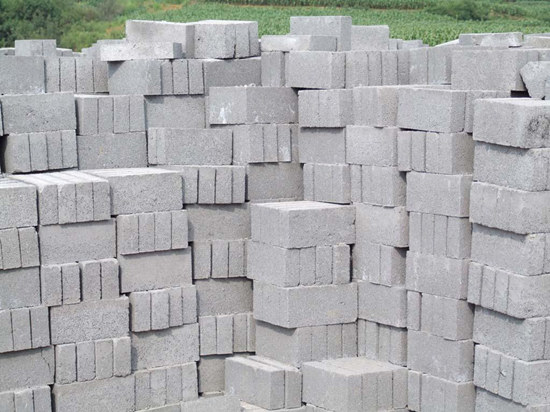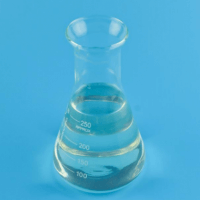Professional solutions on concrete addtives, Concrete Foaming Agent, Superplasticizer, CLC Blocks Additives, and foaming machine
(Problems in practical application of polycarboxylate ether superplasticizer in concrete engineering )
1. Does the storage environment affect the performance and efficacy of superplasticizers?
Temperature: The performance of the superplasticizer decreases at low temperatures. Therefore, during storage, storage of high-efficiency water-reducing admixtures in low-temperature environments should be avoided as much as possible. In hot summer, care should be taken to avoid storing high-efficiency water-reducing agents in high-temperature environments.
Humidity: High-efficiency water-reducing agents are susceptible to moisture. If the superplasticizer gets wet, it will lose some of its properties. Therefore, superplasticizers should be stored in a dry environment.
Light: High-efficiency water-reducing agent is sensitive to light. If the superplasticizer is exposed to sunlight for a long time, its performance will decrease. Therefore, as much as possible, superplasticizers should be stored out of direct sunlight.
Oxidation: Superplasticizer is susceptible to oxidation, and exposure to air should be avoided. When storing high-efficiency superplasticizers, choose a sealed container and minimize the air in the container.
2. Effects of polycarboxylate superplasticizer on the durability of concrete
l Impermeability
The impermeability of concrete is connected to its porosity and pore structure. The pores in concrete can be divided into four degrees according to the pore dimension: <4~5nm, 5~50nm, 50~100nm and >100nm. If the volume fraction of pores with pore diameters greater than 50nm increases, it will have an adverse effect on the strength and impermeability of concrete; if the volume portion of pores with pore diameters less than 50nm rises, the power, impermeability, and deterioration resistance of concrete will be improved. At the same time, when concrete is mixed with the polycarboxylate high-efficiency water-reducing agent, the water-cement proportion of concrete will be decreased and the pore framework will be improved. This will help increase the compactness of the internal structure of concrete and reduce bleeding channels, thereby effectively enhancing the impermeability properties of concrete.
l Freeze and thaw resistance
The effect of polycarboxylic acid superplasticizer on the freeze-thaw resistance of concrete resembles that of ordinary water-reducing agents. When the non-air-entraining polycarboxylate high-efficiency water-reducing agent is mixed into concrete, the high-efficiency water-reducing effect of the water-reducing agent can effectively reduce the water-cement ratio of the concrete. At the same time, in view of the reduction of free water that can be frozen in the concrete structure, It improves the impermeability of concrete, which is beneficial to improving freeze-thaw resistance. This is mostly because when concrete is mixed with an air-entraining polycarboxylic high-efficiency water-reducing representative or a non-air-entraining polycarboxylic high-efficiency water-reducing agent and an appropriate quantity of air-entraining agent, as a result of the air-entraining impact of the admixture, the concrete A certain amount of independent, tiny, stable bubbles will be introduced into the system, which can effectively alleviate the concentration of expansion pressure caused by freezing and supercooled water migration, thereby significantly improving the freeze-thaw resistance of concrete.
l Resistant to sulfate and chloride corrosion
Engineering test research found that the corrosion resistance of concrete mixed with polycarboxylic acid superplasticizer against sulfate and chlorine salts is not significantly different from that of concrete with ordinary admixtures. Although the polycarboxylate superplasticizer will contain a certain amount of sulfate, the strong web content is generally less than 10% and will not influence the freeze-thaw resistance of hardened concrete within the suggested range. Under regular circumstances, the addition of polycarboxylic acid superplasticizer will have no rusting effect on the steel bars in reinforced concrete.
l Steel-concrete bond strength
For ordinary concrete and lightweight concrete, the addition of polycarboxylate superplasticizer can enhance the bonding strength of steel bars and concrete. Some data show that for ordinary concrete if flat round steel is used, the addition of polycarboxylate superplasticizer can increase the steel-concrete bond strength of 7-day-old concrete from 1.2MPa to 3.5MPa; if rebar is used, The bonding strength increases from 15.0 MPa to 27.5 MPa.
3. The influence of concrete raw materials on the performance of polycarboxylate superplasticizer
l Effect of cement on polycarboxylate superplasticizer
There are essential differences between ordinary lignosulfonate-based water-reducing agents, naphthalene-based water-reducing agents and polycarboxylic acid-based water-reducing agents. Polycarboxylic acid-based water-reducing agents have the advantages of being environmentally friendly, non-hazardous, strong in slump retention, and high in water-reducing rate, so they are widely used. However, this kind of water-reducing agent also has certain defects, such as poor adaptability, but this is also a common defect of ordinary water-reducing agents. For example, when applying a certain cement, the cement slurry may have poor fluidity and poor water-reducing effect. The primary factor for this sensation results from the molecular framework of the material itself. In addition, it is also related to the properties of the cement. Composition and surface properties.
l Effect of fine aggregate on polycarboxylate superplasticizer
Industrial sand and all-natural sand are frequently used as great aggregates in concrete and are just one of the raw materials for preparing concrete. All-natural sand is split into 3 kinds: river, hill, and sea. Nevertheless, it must be noted that in the process of preparing concrete, do not utilize a huge amount of polycarboxylate water-reducing agent. As soon as excessive, it will definitely respond with fine aggregate, which will affect not only the concrete's slump but also the concrete's slump. Adversely, it affects the intensity. In addition, another important factor affecting the adaptability of concrete and polycarboxylate water-reducing agents is the stone powder content in the sand. If sand with a high stone powder content is utilized in the process of preparing concrete, it is highly likely to have a collection of results on the fluidity of the concrete.
On top of that, other qualities of fine accumulations will additionally impact the versatility of concrete and polycarboxylic acid-based water-reducing representatives, such as the density of the sand. Usually speaking, if the excellence of the sand is smaller than the typical worth, the concrete will endure a rapid loss of fluidness. At the same time, the sand rate and the residual sulfates and chloride ions in the sea sand will affect the polycarboxylic acid system's water reduction. The adaptability of the agent will have a particular impact. In addition to the above factors, the mud content in sand and gravel will also affect the adaptability and performance of the polycarboxylate water-reducing agent. This is generally because the dirt has a solid adsorption force, which will influence the water, reducing the price of the water decreasing representative. The mud content will also be different for different materials. Generally speaking, the soil content in the sand and gravel will significantly affect the polycarboxylate water-reducing agent. When the mud content in the sand and gravel exceeds 3%, the performance of the water-reducing agent will be significantly reduced. , even adding an appropriate amount of mixture will not enhance the fluidity of concrete.
l Impact of coarse accumulation on polycarboxylate superplasticizer
Another essential element affecting polycarboxylate superplasticizers is rugged aggregate. This performance is mainly shown in the stones' rank and needle flake web content. Even for stones with the same gradation, if the needle-flake material of the stones increases, the flow rate of concrete will inevitably slow down, and the decline in development may lead to bleeding or partition. Furthermore, the water absorption rates of rugged aggregates with various densities will certainly also be various. Usually, excellent aggregate's water absorption is higher than rugged aggregate's. Even if the air material or dosage of the water-reducing agent is transformed, the anticipated purpose can not be achieved. Just by readjusting the mix, the proportion of concrete can be transformed. Therefore, during the actual construction process, it is necessary to constantly adjust the stone gradation and the mud content of the sand based on the actual conditions of the raw materials and seek the best solution.
Supplier
TRUNNANO is a supplier of concrete superplasticizer, which is concrete and relative products with over 12 years experience in nano-building energy conservation and nanotechnology development. It accepts payment via Credit Card, T/T, West Union and Paypal. Trunnano will ship the goods to customers overseas through FedEx, DHL, by air, or by sea. If you are looking for high-quality concrete concrete superplasticizer, please feel free to contact us and send an inquiry. (sales@cabr-concrete.com).
(Problems in practical application of polycarboxylate ether superplasticizer in concrete engineering )







